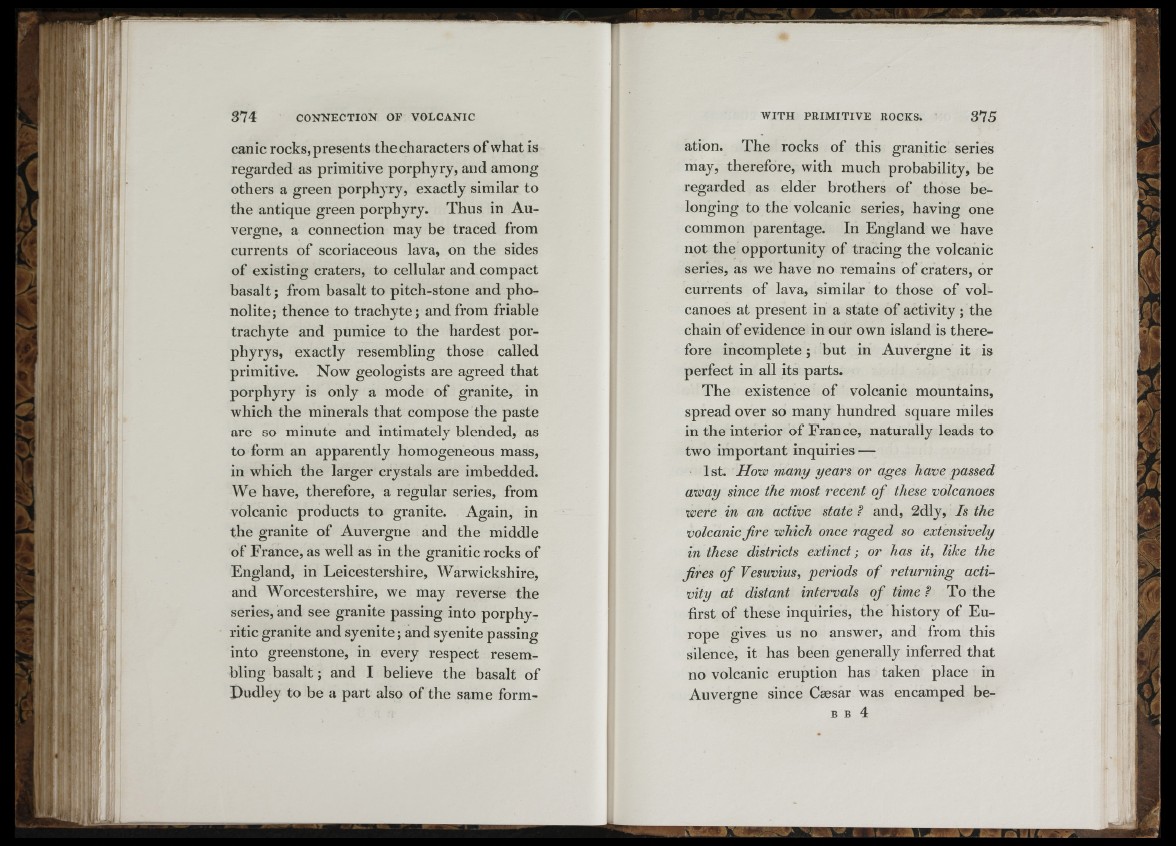
r
NI•
1
b
M ÜÜÎ
' 4
Ev "
iU
ft III =
374 C O N N E C T IO N O F V O L C A N IC
canic rocks, presents the characters of what is
regarded as primitive porphyry, and among
others a green porphyry, exactly similar to
the antique green porphyry. Thus in Auvergne,
a connection may be traced from
currents of scoriaceous lava, on the sides
of existing craters, to cellular and compact
basalt ; from basalt to pitch-stone and phonolite;
thence to trachyte; and from friable
trachyte and pumice to the hardest por-
phyrys, exactly resembling those called
primitive. Now geologists are agreed that
porphyry is only a mode of granite, in
which the minerals that compose the paste
are so minute and intimately blended, as
to form an apparently homogeneous mass,
in which the larger crystals are imbedded.
We have, therefore, a regular series, from
volcanic products to granite. Again, in
the granite of Auvergne and the middle
of France, as well as in the granitic rocks of
England, in Leicestershire, Warwickshire,
and Worcestershire, we may reverse the
series, and see granite passing into porphyritic
granite and syenite ; and syenite passing
into greenstone, in every respect resembling
basalt ; and I believe the basalt of
Dudley to be a part also of the same form-
W I T H P R IM I T I V E R O C K S . 375
ation. The rocks of this granitic series
may, therefore, with much probability, be
regarded as elder brothers of those belonging
to the volcanic series, having one
common parentage. In England we have
not the opportunity of tracing the volcanic
series, as we have no remains of craters, or
currents of lava, similar to those of volcanoes
at present in a state of activity ; the
chain of evidence in our own island is therefore
incomplete ; but in Auvergne it is
perfect in all its parts.
The existence of volcanic mountains,
spread over so many hundred square miles
in the interior of France, naturally leads to
two important inquiries —
1 St. How many years or ages have passed
away since the most recent o f these volcanoes
were in an active state f and, 2dly, Is the
volcanic f re which once raged so extensively
in these districts extinct ; or has it, like the
fr e s o f Vesuvius, periods o f returning activity
at distant intervals o f time ? To the
first of these inquiries, the history of Europe
gives us no answer, and from this
silence, it has been generally inferred that
no volcanic eruption has taken place in
Auvergne since Cæsar was encamped be-
B B 4
d. ÿIl;l
i
■ÂM.. : u k a e w . jBbÉ A U r